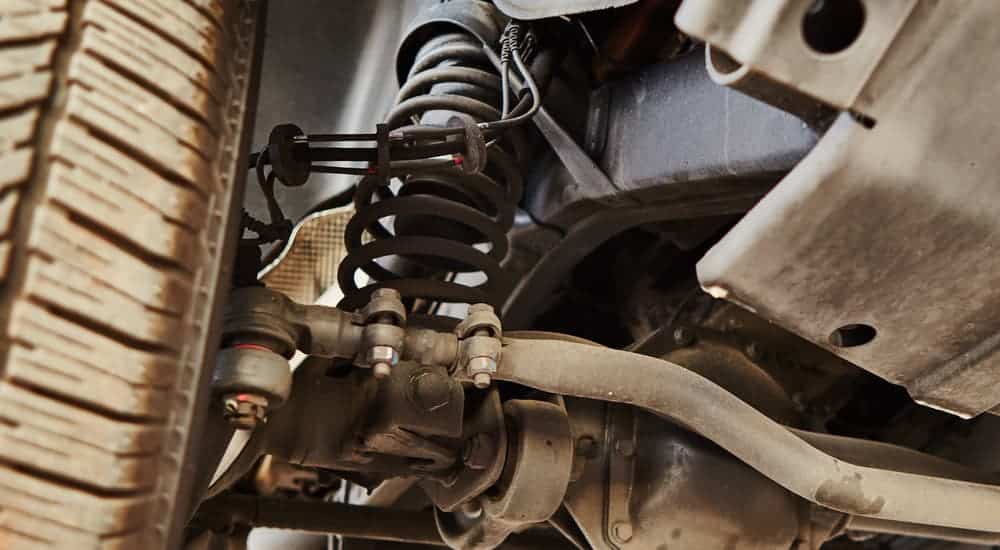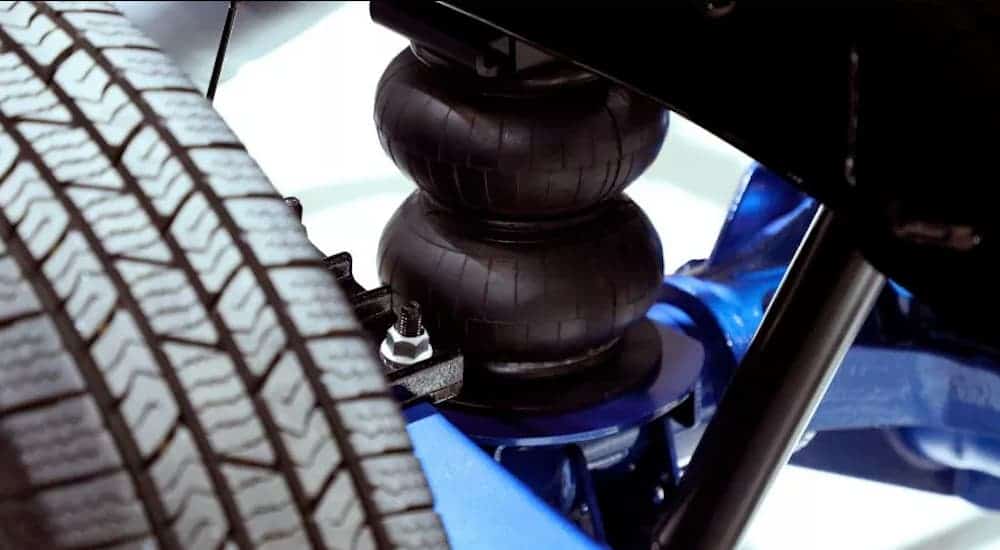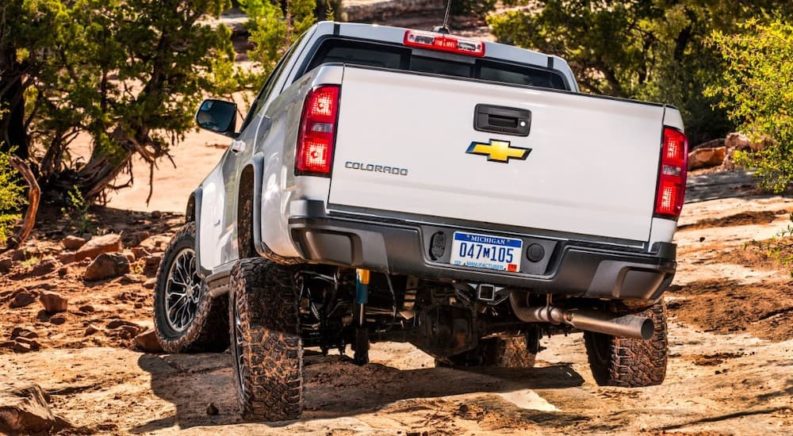When it comes to automobiles, there are a number of different systems, parts, and components that all come together to make motion possible. From the engine to the tires and everything in between, these separate systems work in harmony to keep a vehicle running and driving properly. While they are all necessary in the grand scheme of things, there are certain components that play a much larger role than others. While the engine is commonly thought of as the most important part of a vehicle for generating motion (for good reasons), a vehicle’s suspension is just as important. When people think of upgrading their vehicle’s power and performance, they immediately jump to improving their engines, as that is what generates the power necessary for driving. However, all of that additional power being generated is useless if the driver cannot control their vehicle. Many companies offer different types of suspension upgrades for both cars and trucks, which can improve the handling and responsiveness of your vehicle. When it comes to choosing an upgrade, knowing your needs and what you want out of your vehicle will help out immensely.
What is a Suspension System/What Does it Do?
Essentially, a suspension is a system in a vehicle that connects it to the wheels and allows relative motion. It is composed of the tires, tire air, springs, shock absorbers, and linkages. Suspension systems are quite interesting, as their 2 primary functions of supporting handling and improving ride quality are actually at odds with one another. This is why fine-tuning a suspension is really just finding the most comfortable and effective compromise between the two. Suspension in automobiles has actually existed in one form or another since even before the creation of automobiles. Horse-drawn carriages would utilize a platform attached to the wheels via metal chains. These chains were eventually replaced with leather straps called “thoroughbraces”, but these were eventually phased out in favor of springs due to the higher speeds that automobiles could travel at. A suspension system is extremely necessary due to the fact that roads are never perfectly flat. Even a freshly paved road can have slight imperfections, which affects the tires. These slight bumps apply upward force when the tires rolls over them, the magnitude of which depends on the size of the bump in the road. This causes the tires and in effect the vehicle to experience vertical acceleration every time it goes over a bump, even a small one. Without the suspension system to intervene, all of the vertical energy is transferred in to the frame of the vehicle, which would also move upwards. This can cause the tires to lose contact with the road completely, and then slam back down due to gravity, creating a very unfortunate scenario for the driver. The suspension system is able to absorb this upwards acceleration, which allows the frame and body to go undisturbed as the wheels travel over the bumps.

Different Forms of Suspension
- Dependent Suspension System– A dependent suspension system is a suspension that has a solid axle, and goes all the way around the frame of the vehicle. It allows the wheels on both the right and the left side of the vehicle to work together as a team. If one side of the suspension bends or twists, the other side will as well due to the dependency. This system is particularly effective when it comes to handling rough road conditions, as each bump is transferred evenly throughout the vehicle. It is due to this that they are the primary system of choice for all-wheel drive vehicles and SUV’s.
- Independent Front Suspension (IFS)– IFS is a suspension system in which allows the wheels of the vehicle’s front axle to move up and down, independent of the rear axle. This allows for better handling, responsiveness, and driving comfortability than more rigid systems. Due to this, these systems are typically found on smaller passenger vehicles which don’t see quite as many rough road conditions. However, IFS systems typically require a much more complex design.
- Independent Rear Suspension (IRS)– IRS is a suspension system that is very similar to an IFS system. However, the wheels in the rear axle are able to move independently of the front wheels. It also offers a smoother and more responsive driving experience, while also being more durable than its counterpart. However, IFS systems are the most common between the two.
- MacPhearson Struts– These are a system of suspension that utilizes a coil spring that is over a shock-absorbing strut. It is widely used in the front suspension of modern vehicles, and is primarily found on smaller vehicles. They are designed very simply and are quite lightweight, which lends to their popularity in today’s vehicles. They are also packed with the front crash structure of the vehicle, making them much more durable in the case of a collision. There are also less moving parts, which decreases the chances of mechanical failure.
- Air Suspension– This is a system of suspension which, as you can probably guess, utilizes air springs. These springs are usually controlled by an air compressor and electronic levelers. In the past, these were typically only found on large trucks due to the cost, however recently they have been implemented in some sports cars and other luxury vehicles. They offer a very comfortable ride, as they are designed for maximum force absorption. They are also adjustable, giving drivers the ability to adapt to any sort of road conditions. On top of that, they also increase a vehicle’s towing capabilities, making them very useful for trucks or SUV’s.

- Leaf-Spring Suspension– This is the oldest and most common form of suspension system available, and is used by many automakers throughout the market. It is composed of numerous pieces of metal strips which are clamped together. Due to the amount of metal that is clamped together, leaf-spring suspension is very durable against bumps and large tow-loads. It also makes it simple and cost-efficient to repair/replace.
- Multi-Link Suspension– This is a suspension system which is more complex and expensive than other options out there. It consists of three or more lateral arms, and at least one longitudinal arm. Basically, it is a more complex form of independent suspension. It is one of the more versatile systems of suspension out there, and offers a great compromise between responsiveness, comfort, and size. It allows a vehicle to flex more, making it a very popular option for off-roading vehicles.
There are a large number of different systems and components that come together to make movement possible for a vehicle. One of the most important systems for movement is the suspension, which in itself is composed of many different parts. These parts work together in harmony to not only make the wheels turn, but also to absorb the upward force created by the road. There are a number of different suspension systems that exist today, and each one offers its own advantages and disadvantages. Figuring out what system is right for your particular driving conditions can save you money on repairs, while simultaneously offering you the smoothest and most comfortable driving experience.

